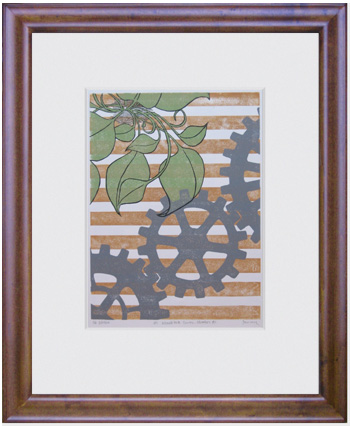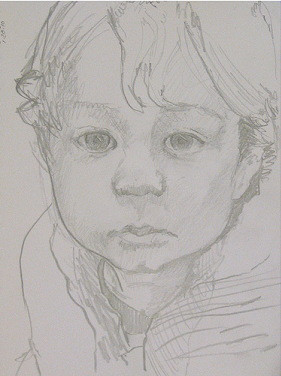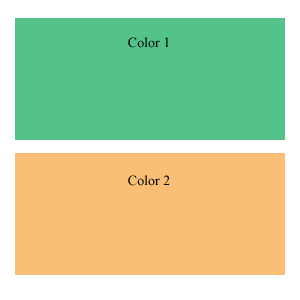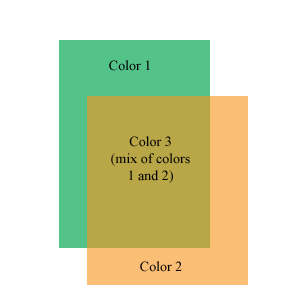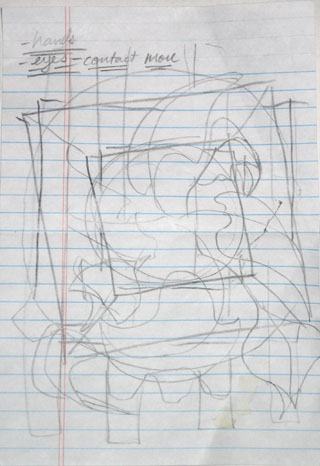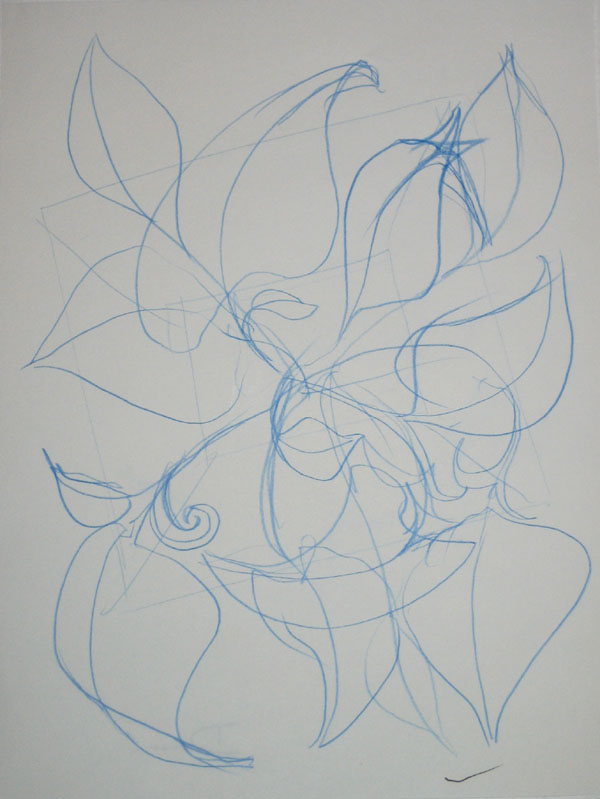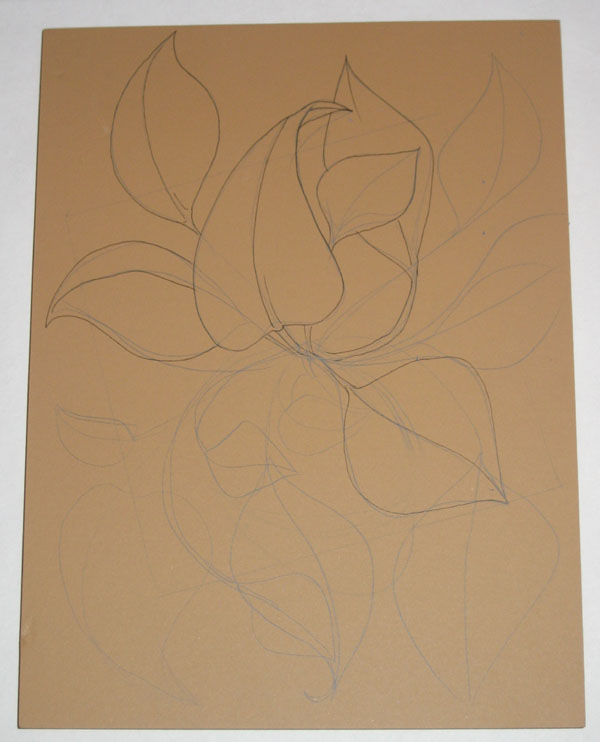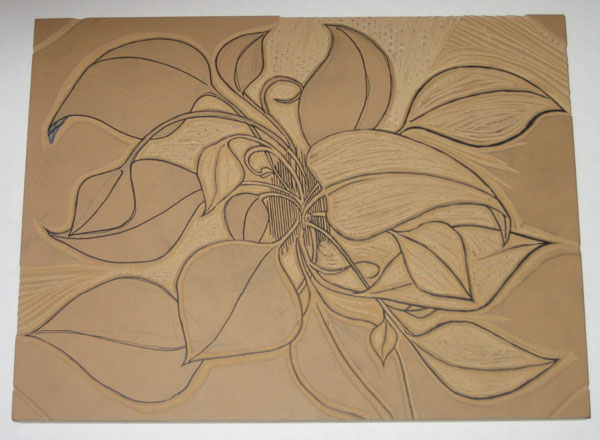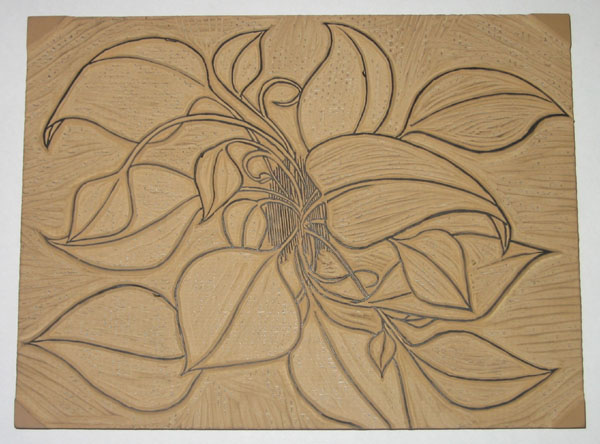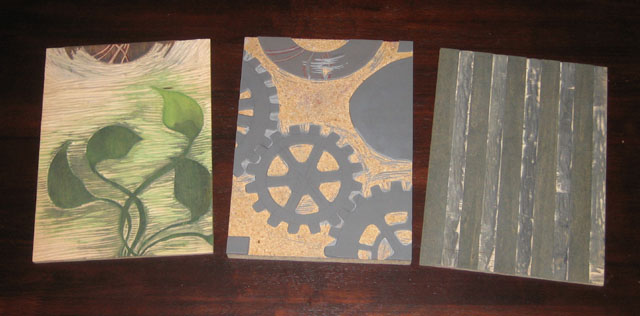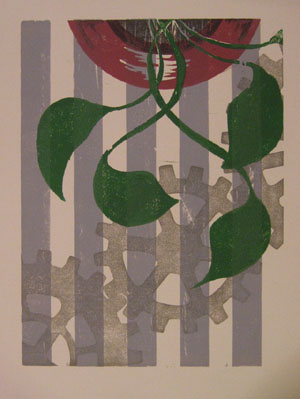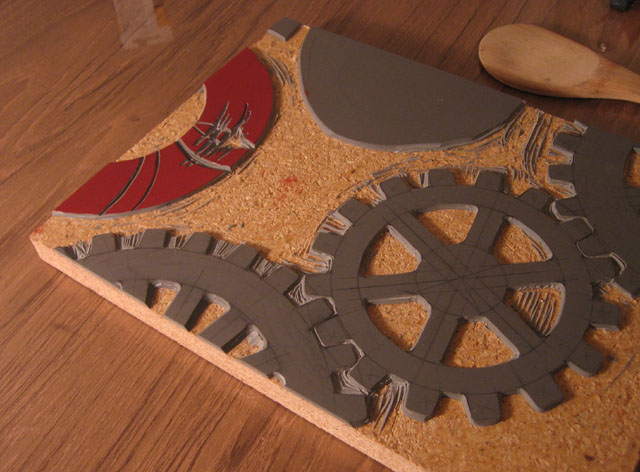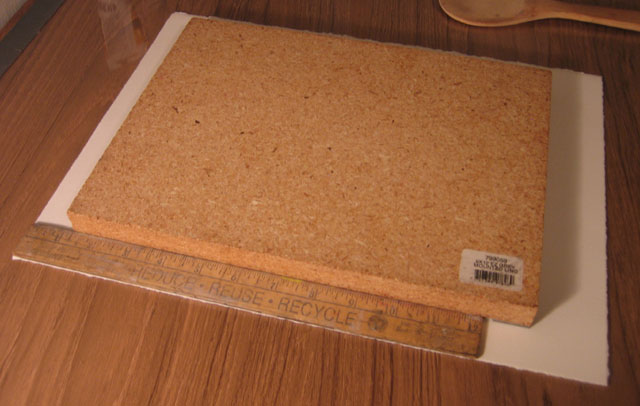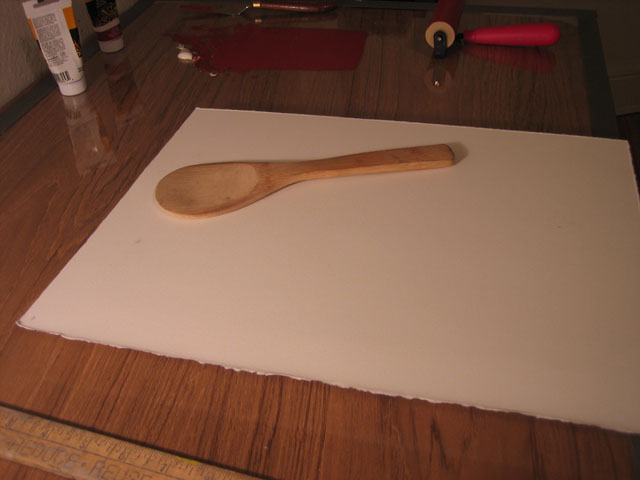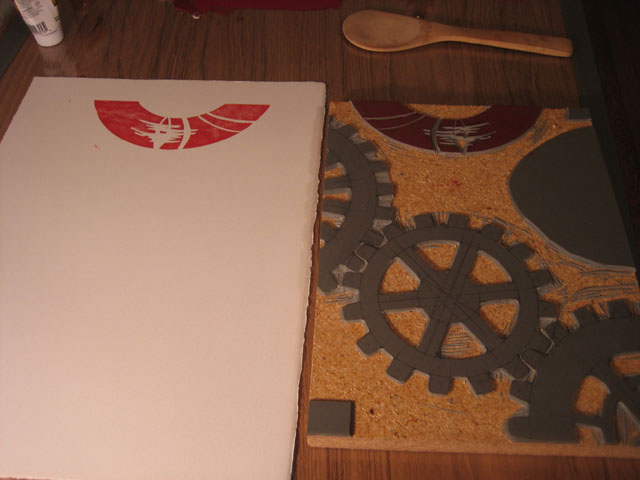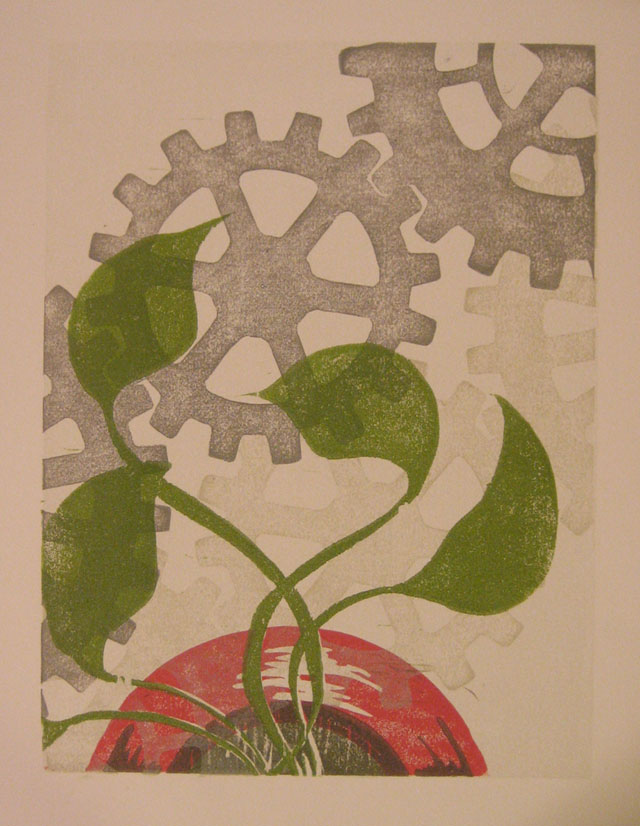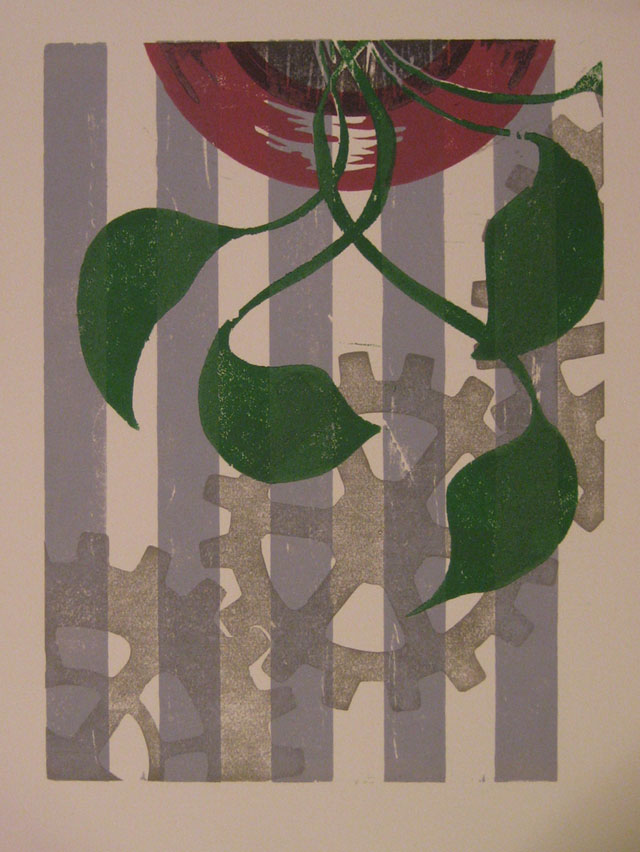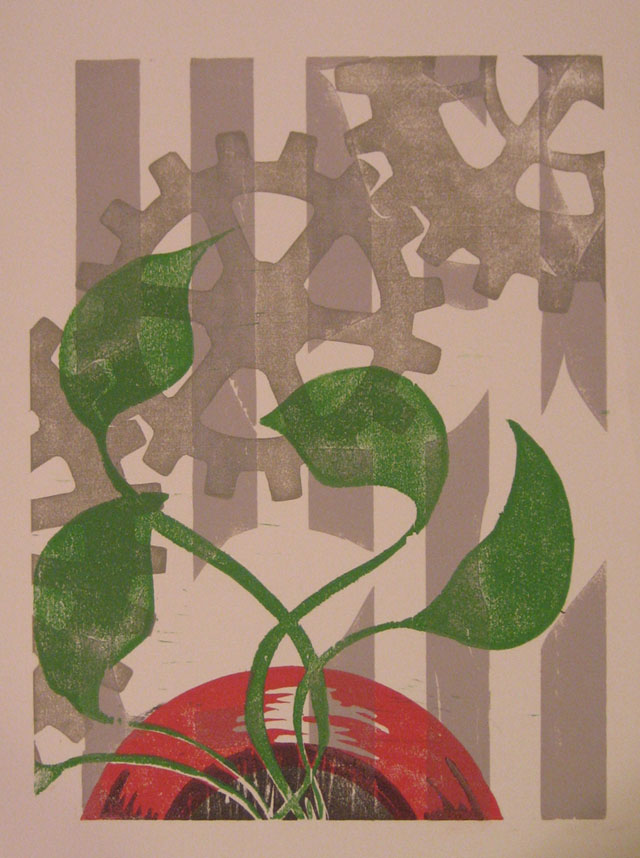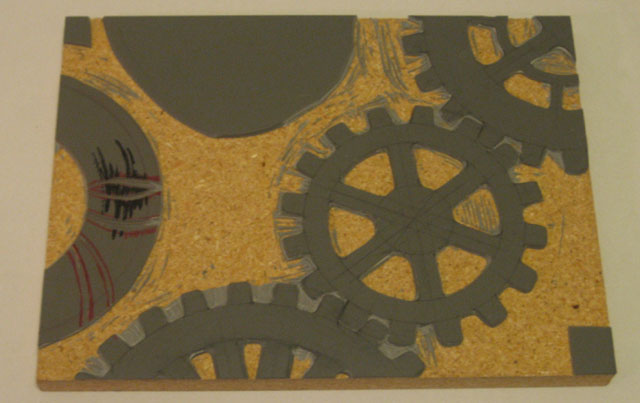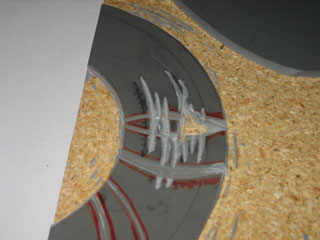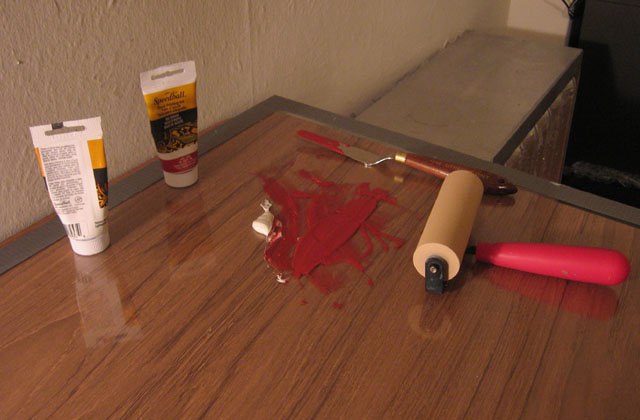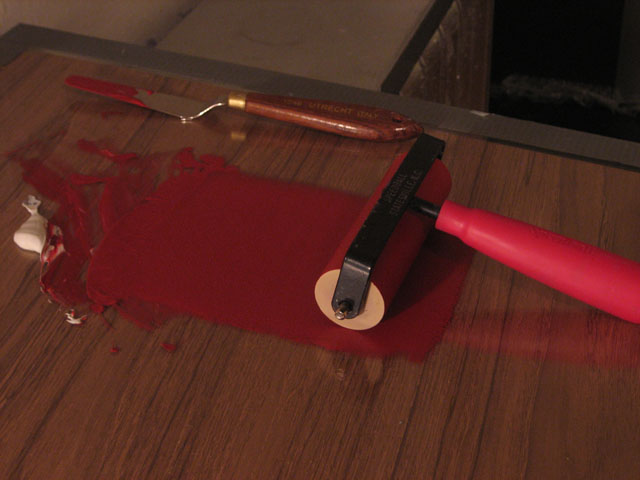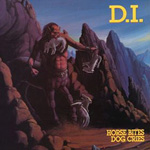
Horse Bites, Dog Cries by D.I. One of the better punk rock records ever.
I didn’t intend to stay up till 3am last night.
I’ve been in the Spice Mines (DayJob) all weekend, trying to get caught up for a deadline. This put a huge damper on my weekend, when I usually put in a lot of time working on art. I got home around 8pm last night, after a 10 hour day in the office. I packed up a few orders, and relaxed for a bit.
My mistake was to listen to “Horse Bites, Dog Cries”, quite possibly the most perfect punk rock record ever. I got fired up, and grabbed my sketch book. Then I remembered I have a bunch of small 4″x4″ woodblocks.
Before I knew it, I was sketching out an idea for a quick little woodblock print. 10 to 15 minutes later, I had a decent enough sketch on paper, so I re-drew the image on the block, and carved for a good 3 hours or so.
I rolled out some black ink, and printed up 8 copies of this silly little image. It’s not meant to be anything groundbreaking, just a funny little image of a dude on a skateboard.
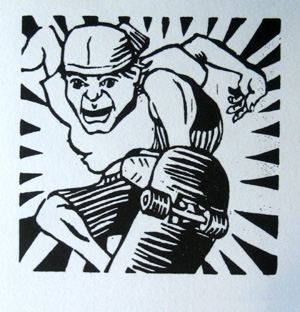
Static On The Brain, 4x4 inches, Woodblock Print
I am gonna be wiped out all day because I stayed up till 3am, and my alarm went off at 6:30.
…though it took me till 7:15 to roll out of bed.
I have been a bit frustrated lately that DayJob has required all my time, and has put printmaking on hold for a few weeks. It felt good to make a little something. Even a silly little something.
What really fired me up was listening to some awesome music. This print is brought to you by the following albums (I listened to D.I. and Suicidal twice):
- D.I. – Horse Bites, Dog Cries
- Circle Jerks – Group Sex
- Dead Kennedys – In God We Trust, Inc.
- D.I. – Team Goon
- Adolescents – Adolescents
- Wasted Youth – Reagan’s In
- Suicidal Tendencies – Suicidal Tendencies
- 7 Seconds – Walk Together, Rock Together
All albums I recommend if you want to get your early 80’s punk rock fix.
A Few Things Learned
1 – Washi paper accepts the ink on the block far better than cotton rag paper. The paper I have been using for my last project is Rives BFK, a heavy, thick paper. It is meant for lithography or intaglio, not block printing.
A few weeks ago I placed an order for a selection of Washi papers. Tonight was the first time I used these papers, and the more delicate washi takes the ink far easier than the cotton rag paper.
2 – When an ink maker calls their ink “Intense Black”, they might mean it. This stuff is a mess, and is gonna be stuck under my fingernails for a good week or so.
Oh well.
The Real Lesson
The real lesson of this whole thing is not to listen to awesome music, because it will make you do awesome stuff, and you won’t sleep. This is the danger of Punk Rock music.
I will probably end up giving these away as promotions, or selling them for a few bucks. In this case, the doing was far more important than the product.
